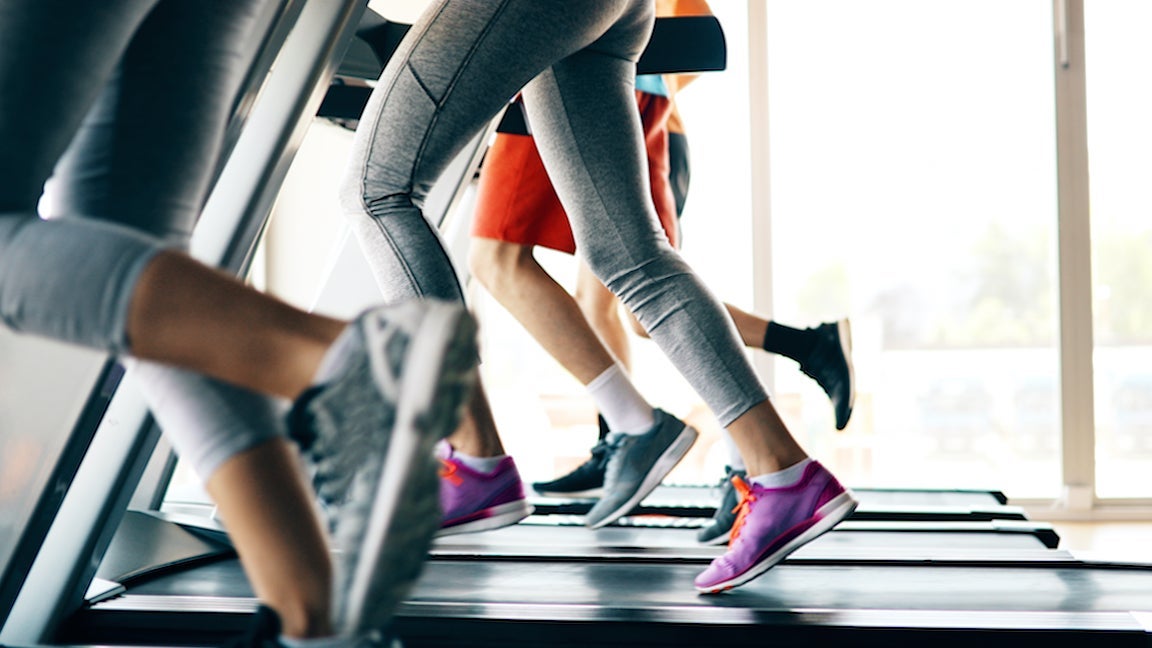Carbon fiber plates aside, few topics are as polarizing among runners as treadmills. Opponents stand by the toughness they gain from gritting it out in the elements, day after day after day. The sacrifice in pace is worth it, they say, when race day comes and they’re ready for anything.
On the other end of the spectrum are runners who view the treadmill as a training tool, one especially helpful in the depths of winter. From slick surfaces to seasonal fatigue, there are a number of reasons why runners choose to run inside this time of year. Below, four elite runners and I share details on when we take our workouts indoors and how we make the most of them.
When the Roads are Unsafe
To Sam Roecker, a 2:29 marathoner and full-time nurse based in Philadelphia, treadmills are a last resort. Hazardous conditions are the exception. “Any time that the roads or track are too unsafe for a run” — meaning ice, snow, extreme cold, or other conditions that may compromise her stride — Roecker hits the treadmill. She also heads inside for some evening solo runs, when she’d otherwise be braving it in the dark. Her favorite indoor session is a 5- to 6-mile tempo, running the first 5K steady and increasing the pace every half-mile over the last 5K or so.
Roecker’s treadmill tips: “I am able to stay the most engaged by ‘pressing buttons’… and making little ‘rules’ like telling myself after X number of miles or minutes, I can increase or decrease the incline (or pace) every .XX (distance or minutes)… just playing mind games and making rules that balance being focused and distracted during monotonous treadmill miles.”
When Conditions are Extreme
Like Roecker, Boulder, Colo., runner Willie Milam — whose PRs include a 61:46 half marathon and 2:14 marathon — lets the winter weather dictate where he runs. When there’s any ice, wind that exceeds 25 miles per hour, or more than 4 to 5 inches of snow on the ground, Milam opts indoors to preserve the quality of his runs and reduce his risk of injury. (He does the same in the summer, when temperatures approach triple digits.) While he also likes easy runs, tempos, and afternoon doubles, the treadmill workout Milam enjoys most is a progressive run consisting of a 3-mile warmup, a 10-12-mile effort starting at 6:00 pace and cutting down every mile until he’s going faster than marathon pace: 5:00/mile or faster, and a 3-mile cool-down.
Milam’s treadmill tips: “Cover up the front of the treadmill with a shirt/towel. Listen to something, or watch something. Take breaks if needed. Let the treadmill do the work!”
When You’re Working Out Alone
Rachel Johnson, a steeplechase specialist and the women’s distance coach at Liberty University in Lynchburg, Va., doesn’t train with a group or live in the same city as her coach. Acting like a pacer, the treadmill helps her maintain rhythm and stay focused during solo sessions. Johnson finds that indoor workouts are especially useful when it’s really hot and humid or very cold outside — both of which are possible in Virginia. She says, “In the winter, I notice if I try to do hard workouts in weather under 35 [degrees], I’m a lot more prone to muscular injuries.” Her favorite workout on a treadmill is an 8-10-mile tempo run.
Johnson’s treadmill tips: “Music helps me a lot! If it’s a workout day, it’s easy to zone in and stay engaged on the treadmill.”
When You Need a Mental Break
Marathoner Parker Stinson, who trains in Boulder and holds the 25k American record, takes a different approach to the treadmill. He keeps his hard workouts outside if at all possible — even when that means running 13 miles on a shoveled track — but regularly does his easy runs on a treadmill. For the most part, Stinson prefers to only run outside once a day in the winter, so his easy and double runs inside offer a break from the cold temperatures and multiple layers of clothes. By not grinding through every run this time of year, he’s able to conserve mental energy for his hard workouts outside. A typical treadmill run for Stinson is an easy 8–10-mile run, or a 4–5-mile shakeout.
Stinson’s treadmill tips: “I turn on the T.V., have my music, and embrace the opportunity to wear short shorts and no t-shirt. It’s so different from running outdoors in winter, so I think of the treadmill as a treat rather than dreading it.”

When You Want to Practice a Course and/or Fluid Plan
As a native Texan who’s spent the last four years in Boulder, I’m certainly not above wintertime treadmill running. In addition to running inside when the roads are slick or trails are covered — I still haven’t figured out how to maintain a normal gait on dicey surfaces — there’s another reason I turn to the treadmill: to mimic the elevation changes of an upcoming race, while also practicing my fluid strategy. Treadmills are the perfect vehicle for those goals, because hills can appear with the click of a button and there are no excuses for slacking on hydration (I take a few big gulps from my bottle every 5k of a long workout or race, adjusting that based on the logistics of the event I’m preparing for). In addition to progressive tempo runs, I love running in-and-out miles (repetitions of one mile hard followed by one mile easier) on a treadmill.

My treadmill tips: I put a lot of thought into the playlists I listen to during long workouts inside, typically starting with slower, chill music and building to more upbeat pump-up songs as the workout progresses. I also use indoor runs as an opportunity to practice running smoothly and effortlessly, and to visualize myself running with strength and confidence in future races.


